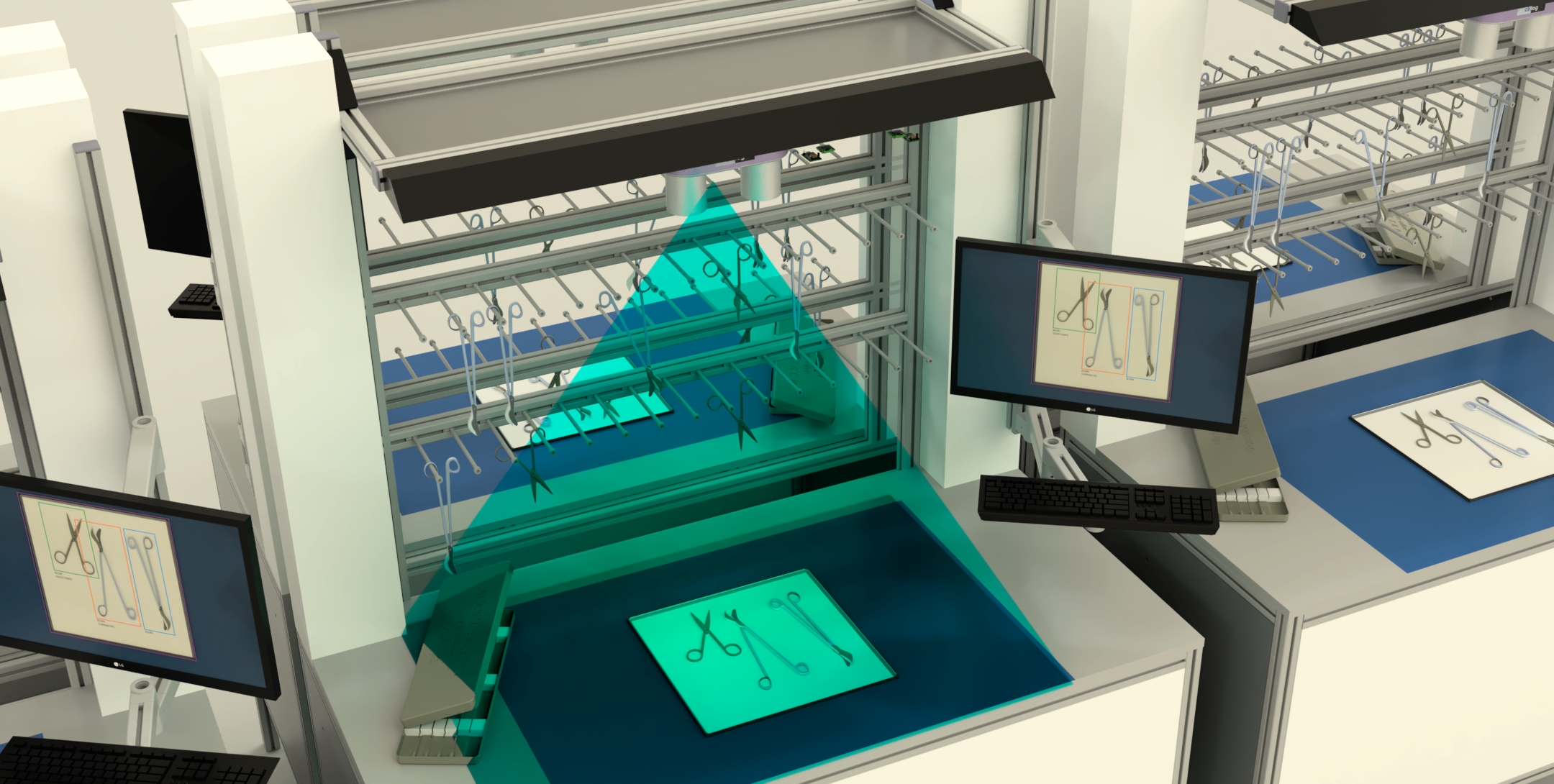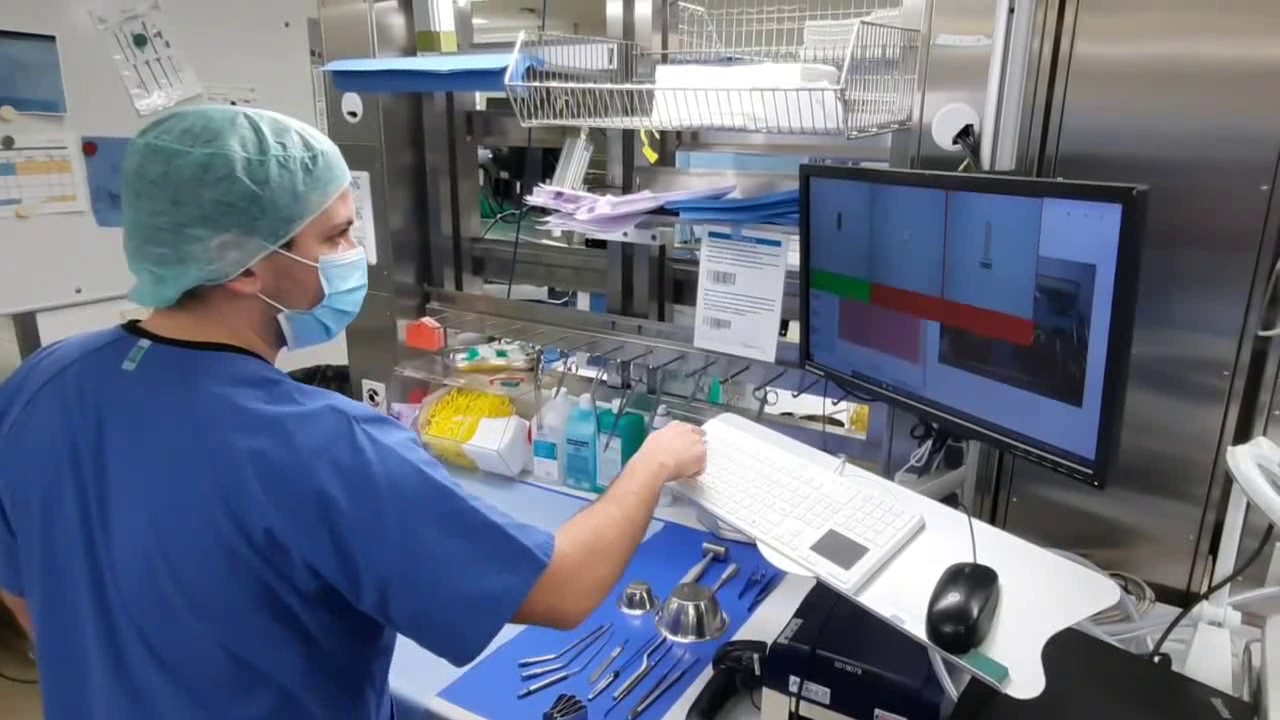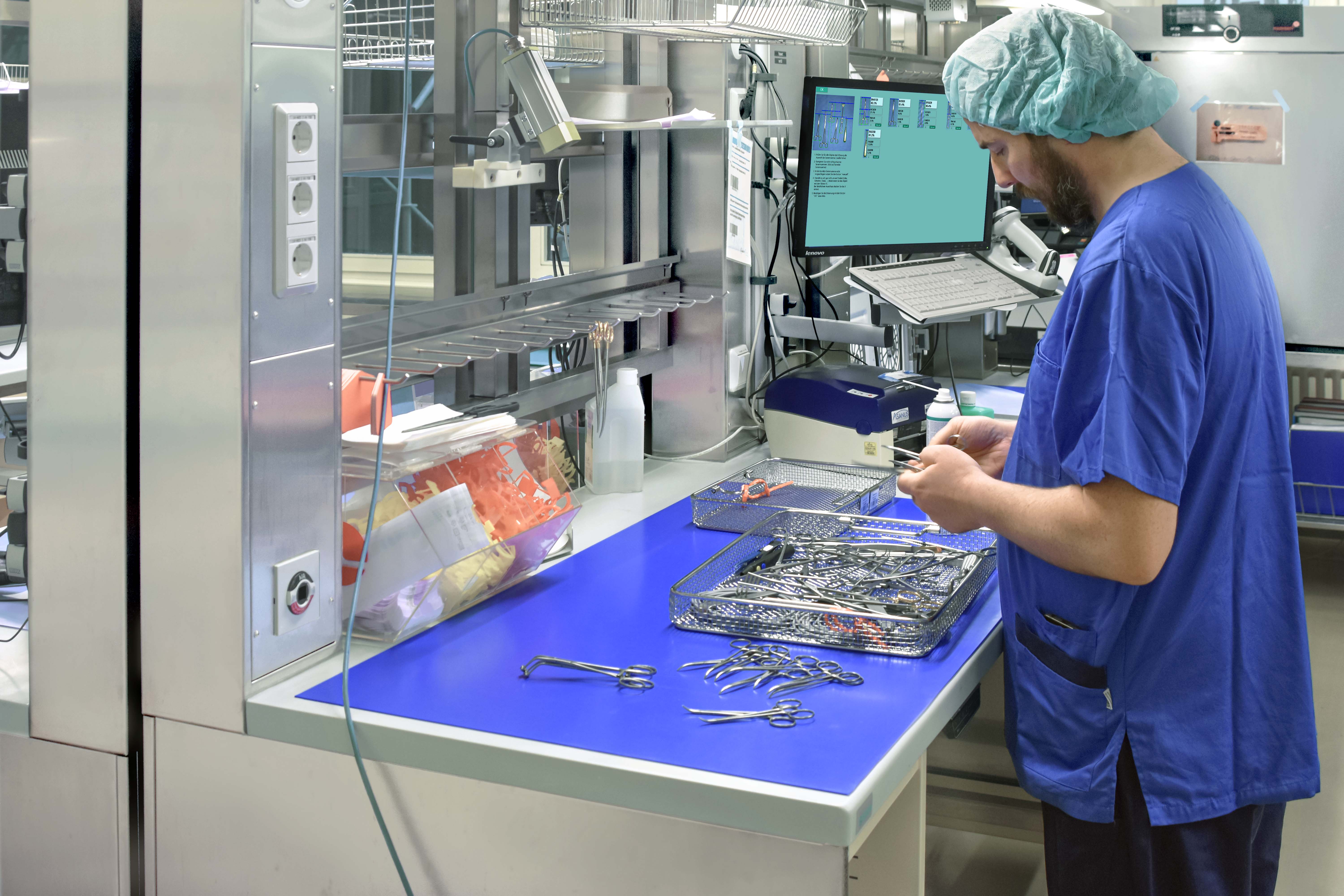Cir.Log® is a groundbreaking development for CSSD
Sterile goods logistics is a central element of the medical care process and ensures that all necessary instruments and medical devices are available in the operating room at the correct time. One innovative way to increase efficiency is to support staff in a CSSD with intelligent systems.
Reduce costs in your CSSD with Cir.Log®
Cir.Log® revolutionizes the packing process. Sterile goods logistics not only becomes safer, but also more efficient and reliable. Depending on the size of the CSSD, the number of employees and the number of packed operation sets, Cir.Log® can save costs of up to €6,000 per month.
Errors in the packing process are a thing of the past
Cir.Log® captures the entire work area and recognizes all instruments like a barcode scanner, but without the need for any barcodes. The resulting advantages are immense. Errors in the packing process are now a thing of the past.
New employees can be trained much faster thanks to the camera, as Cir.Log® helps them recognize the complex instruments.
The existing staff also benefits from the efficient operation of the camera, which leads to an increase in productivity. Last but not least, the camera helps to make the workplace more attractive and allows important work to be carried out efficiently despite a shortage of skilled workers.
By using modern technologies, we can ensure that processes are made more efficient and that the quality of processes at the CSSD remains at the highest level.
Take part and fill in our survey! Your requirements will then be incorporated into the development. [German only]
Fraunhofer researchers are currently conducting a survey among interested CSSDs in order to tailor the technology even more closely to their needs.

 Fraunhofer Institute for Production Systems and Design Technology
Fraunhofer Institute for Production Systems and Design Technology

